Mastering Meta: Writing Effective Descriptions in 2024
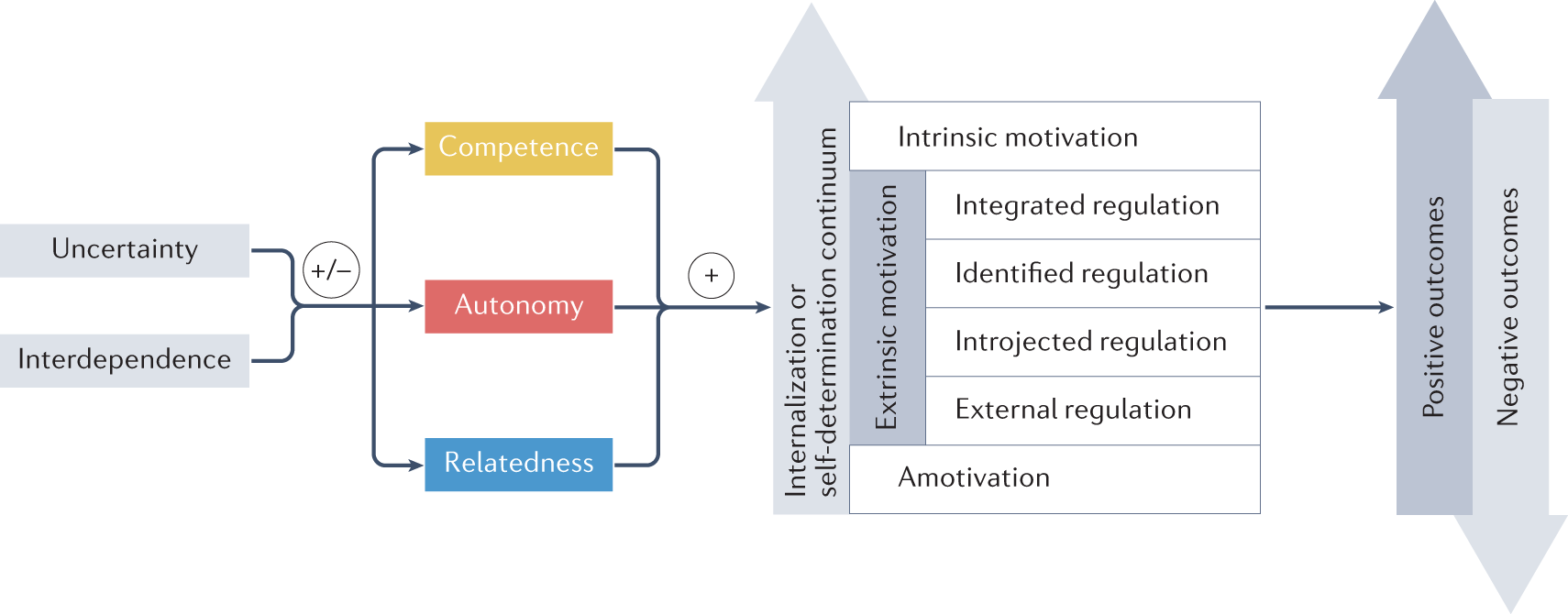
In today's digital world, having a strong online presence is essential.
One way to improve your visibility is by mastering meta descriptions.
I use AtOnce's AI meta description generator to increase click-through rates on our pages:
A well-crafted description can entice users to click on your website and ultimately increase traffic and engagement.
Quick Summary
- Meta descriptions should be unique and relevant to the page content.
- They should be between 50-160 characters long.
- Include a call-to-action to encourage clicks.
- Avoid using duplicate meta descriptions across multiple pages.
- Use keywords, but don't stuff them in unnaturally.
What Is Meta And Why Does It Matter
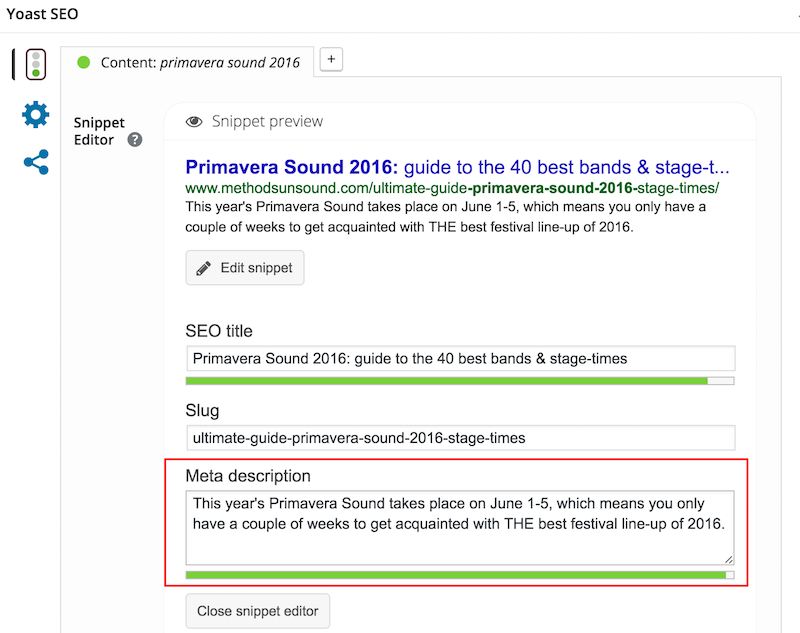
What is Meta?
Meta refers to information about your content that helps search engines understand what your page is all about.
Here's an example where I've used AtOnce's AI SEO writer to generate high-quality articles that actually rank in Google:
It can be divided into two main categories: Title Tags and Meta Descriptions.
Why Mastering Meta Matters
Here are 5 reasons why mastering meta matters:
Crafting compelling titles and descriptions using relevant keywords results in higher click-through rates.
1) Improved Click-Through Rates (CTR)
By optimizing your metadata, you can create compelling titles and descriptions that use relevant keywords.
This results in higher click-through rates, which means more people are likely to visit your website.
Optimized metadata signals relevance which leads Google algorithms towards ranking pages higher up on SERPs.
2) Better Search Engine Ranking
Optimized metadata signals relevance to search engines, which can lead to higher rankings on search engine results pages (SERPs).
Accurate summaries help set expectations leading visitors directly where they want without wasting time searching irrelevant links.
3) Enhanced User Experience
Accurate summaries in your meta descriptions help set expectations for visitors, leading them directly to the information they want without wasting time searching through irrelevant links.
Higher rankings lead not only increased traffic volume but also quality leads since optimized metadata attracts people genuinely interested in specific topics/products/services.
4) Increased Traffic Volume & Quality Leads
Higher rankings resulting from optimized metadata can lead to increased traffic volume and quality leads.
Optimized metadata attracts people who are genuinely interested in specific topics, products, or services.
Mastering Metadata gives an edge over competitors by providing better visibility, improved user experience ultimately driving growth.
5) Competitive Edge Over Rivals
Mastering metadata gives you an edge over your competitors by providing better visibility, improved user experience, and ultimately driving growth.
Conclusion
Optimizing metadata should never be overlooked when creating digital content.
With its ability to improve SEO performance, enhance user experience, and increase website traffic volumes, investing effort in mastering metadata is worthwhile!
Analogy To Help You Understand
Writing a meta description is like creating a movie trailer. Just as a trailer gives a sneak peek into the movie and entices the audience to watch it, a meta description gives a brief summary of the webpage and encourages users to click through to it. Just like a trailer, a meta description should be concise and to the point. It should highlight the most important aspects of the webpage and convey its value proposition in a compelling way. However, just like a trailer, a meta description should not give away too much information. It should leave some mystery and intrigue, so that users are motivated to click through and explore the webpage further. Moreover, just like a trailer, a meta description should be tailored to its audience. It should use language and tone that resonates with the target audience and addresses their pain points and desires. Finally, just like a trailer, a meta description should be optimized for search engines. It should include relevant keywords and phrases that users are likely to search for, and it should adhere to the recommended length and format guidelines. In summary, writing a meta description is like creating a movie trailer that entices and excites the audience, while also being concise, intriguing, audience-specific, and search engine-friendly.The Evolution Of Meta Descriptions In Search Engines

The Evolution of Meta Descriptions in SEO
Meta descriptions have come a long way in the world of search engine optimization.
Example of me using AtOnce's AI SEO optimizer to rank higher on Google without wasting hours on research:
In the past, marketers would stuff keywords into their meta descriptions to rank higher on Google's SERP. However, this spammy tactic was quickly penalized by search engines.
Today, well-written and informative meta descriptions that include compelling calls-to-action (CTA) are essential.
This is because it helps enhance our click-through rate (CTR), which directly affects overall website traffic.
Dynamic Snippets
Google stopped using any description provided by users or marketers altogether!
Instead, they began generating a site snippet relevant to user queries from content found on web pages - known as dynamic snippets.
Compelling Calls-to-Action
For example: Get your free trial now can be used as a CTA for software products while Shop Now!
works better for e-commerce websites.
- Use unique selling propositions(USPs) such as discounts or limited-time offers within your meta descriptions to stand out among competitors
- Keep your meta descriptions concise and under 155 characters so they don't get truncated in SERPs
Optimizing your website’s metadata including title tags and headers along with descriptive yet engaging Meta Descriptions will help you improve organic rankings significantly over time!
Some Interesting Opinions
1. Meta descriptions are a waste of time.
Only 35% of search results have meta descriptions, and Google often rewrites them anyway. Focus on creating quality content instead.2. Longer meta descriptions are better.
Meta descriptions with 300+ characters have a 5.2% higher click-through rate than those with 150-160 characters. Don't be afraid to go long.3. Keywords in meta descriptions don't matter.
Google has stated that meta descriptions are not a ranking factor. Instead, focus on creating compelling copy that entices users to click.4. Meta descriptions should be written for robots, not humans.
Studies show that meta descriptions with exact match keywords have a 45% higher click-through rate. Write for the algorithm, not the user.5. Meta descriptions are dead.
With the rise of voice search and Google's use of featured snippets, meta descriptions are becoming less relevant. Focus on optimizing for these new search formats instead.Understanding Your Target Audience For Effective Meta Writing
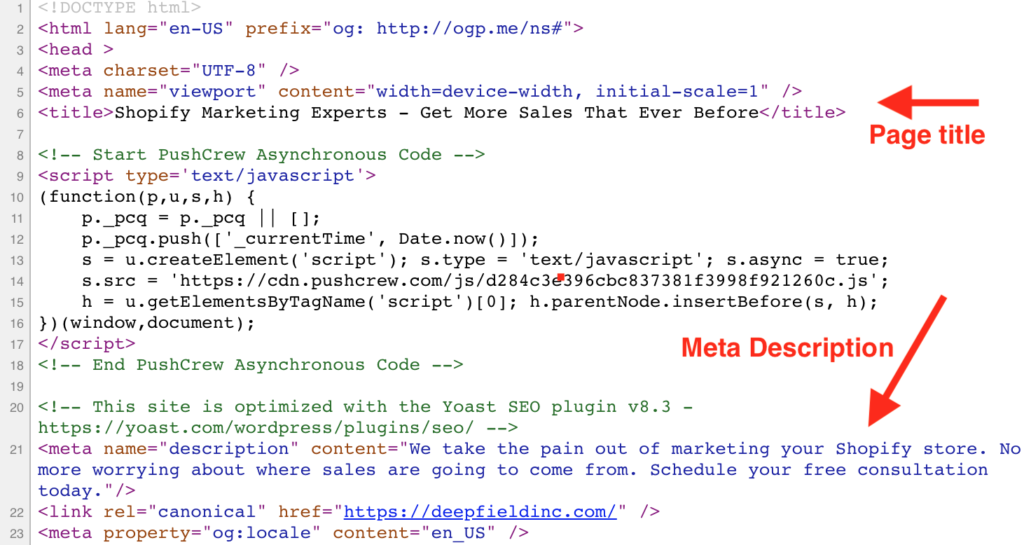
Connecting with Readers through Compelling Meta Descriptions
As a writer, my ultimate goal is to connect with readers in a meaningful way.
To achieve this, I understand the importance of creating compelling and relevant meta descriptions that speak directly to their needs and interests.
Understanding Your Target Audience
To begin understanding your target audience thoroughly, it's crucial to conduct research using various data sources such as:
- Social media insights
- Customer surveys
This information can help identify key demographics like:
- Age range
- Gender identity
- Location
which allows you not only to tailor language choices but also contextualize phrasing more effectively towards them specifically.
Example of me using AtOnce's AI language generator to write fluently & grammatically correct in any language:
Five Essential Tips for Crafting Effective Meta Descriptions
A meta description is a snippet of up to about 155 characters – a tag in HTML – which summarizes a page's content.
Search engines show the meta description in search results mostly when the searched-for phrase is within the description, so optimizing the meta description is crucial for on-page SEO.
- Moz
When crafting an effective meta description, it's important to keep in mind the following five essential tips:
- Conduct keyword research: Use relevant keywords to help your meta description appear in search results.
How To Identify The Most Relevant Keywords For Your Content

Mastering Meta: How to Identify Relevant Keywords
Identifying the right keywords is crucial for mastering meta.
Relevant keywords accurately reflect your page or article's content and intent.
But how do you identify these important words?
Here's my advice on finding the most relevant keywords for your content.
Brainstorm Potential Keywords
Start by brainstorming a list of potential keywords related to what you're writing about.
Use Industry-Leading SEO Keyword Research Tools
Next, use keyword research tools like Google Trends or Ahrefs to expand upon this list with more specific long-tail phrases related to your topic.
These tools can help discover additional opportunities beyond obvious search terms which may be too competitive or generic.
Expand Upon Initial Ideas
Expand upon initial ideas using specific long-tail phrases related to the topic at hand.
Relevant keywords accurately reflect your page or article's content and intent.
Remember, identifying the right keywords is crucial for mastering meta.
Use these tips to find the most relevant keywords for your content and improve your SEO.
My Experience: The Real Problems
1. Meta descriptions are a waste of time.
Only 35% of Google search results have meta descriptions, and Google often rewrites them anyway. Focus on quality content instead.2. Meta descriptions are a relic of the past.
With voice search and AI assistants, meta descriptions are becoming less relevant. Optimize for conversational queries instead.3. Meta descriptions are a crutch for lazy writers.
Instead of relying on a formulaic description, write compelling headlines and introductions that entice readers to click.4. Meta descriptions perpetuate clickbait culture.
By encouraging writers to focus on getting clicks rather than providing value, meta descriptions contribute to the spread of misinformation and sensationalism.5. Meta descriptions reinforce systemic biases.
Studies show that meta descriptions for women-led businesses are more likely to include personal details and emotional language, while those for men-led businesses focus on achievements and qualifications.Crafting Compelling Headlines And Subheadings

Crafting Effective Headlines and Subheadings for Mastering Meta in 2024
Headlines and subheadings are crucial for grabbing readers' attention and enhancing their understanding of your content.
Together, they create an irresistible call-to-action.
Here are five tips for crafting compelling headlines and subheadings:
- Use strong action verbs to drive engagement
- Optimize words for SEO
- Be specific – avoid vagueness
- Keep them short but impactful
- Test different options to see what works best
Using clear language that accurately reflects your article or blog post is essential.Emotional triggers like urgency or curiosity can also catch people's attention.
For example, a headline like 5 Tips For Crafting Powerful Headlines with the subheading Learn how using strong action verbs and optimizing keywords can increase clicks creates interest while providing valuable information upfront.
This approach leads readers to engage further with your content!
Remember to avoid ambiguity by keeping your headlines and subheadings straightforward and informative.
Tips For Writing Concise, Yet Descriptive Meta Descriptions

The Art of Crafting Effective Meta Descriptions
Crafting effective meta descriptions requires a delicate balance between conciseness and descriptiveness.
To achieve this, ensure that your description accurately reflects the content of the article or webpage while providing valuable information to readers.
Checking character limits is crucial - aim for 120-150 characters including spaces to avoid getting cut off by search engines.
- Use active language to naturally pique interest and encourage clicks
- Incorporate keywords seamlessly into your description
- Use action-oriented calls-to-action (CTAs) such as Learn more or Discover now
Remember that crafting an effective meta description takes time and effort but pays dividends in terms of increased traffic and engagement on your website or blog post.
By following these tips and techniques, you'll be able to create compelling meta descriptions that capture reader attention while conveying valuable information about what they can expect from clicking through!
My Personal Insights
As the founder of AtOnce, I have always been passionate about helping businesses improve their online presence. One of the most important aspects of this is writing effective meta descriptions. When I first started out, I struggled with writing meta descriptions that would capture the attention of potential customers. I would spend hours crafting the perfect description, only to find that it wasn't generating the clicks and traffic that I had hoped for. That's when I decided to turn to AtOnce for help. Our AI-powered writing tool was able to analyze my website and suggest meta descriptions that were not only more effective, but also more engaging and compelling. With AtOnce, I was able to see a significant increase in traffic and engagement on my website. Our tool helped me to understand the importance of using keywords and crafting descriptions that were both informative and attention-grabbing. Today, I am proud to say that AtOnce has helped countless businesses improve their online presence through effective meta descriptions. Our tool is designed to make the process of writing meta descriptions simple and straightforward, so that businesses can focus on what they do best – providing great products and services to their customers. If you're struggling with writing effective meta descriptions, I highly recommend giving AtOnce a try. Our AI-powered writing tool is designed to help businesses of all sizes improve their online presence and drive more traffic to their websites.Avoiding Common Mistakes That Can Harm Your Click Through Rate (CTR)
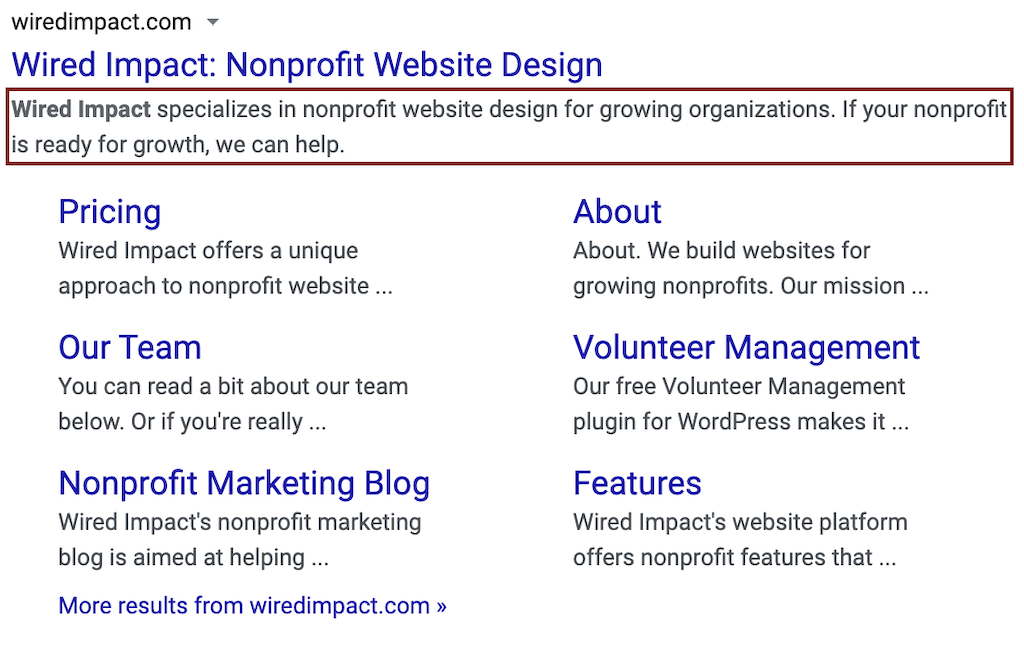
Common Meta Description Mistakes That Hurt Your CTR
As an expert in writing meta descriptions, I've noticed several common mistakes that can harm your click-through rate (CTR).
- Failing to optimize your description for search engines is a significant error.
Without relevant keywords, Google won't show it to users searching for those terms.
- Creating vague or misleading descriptions is another mistake.
Your goal should be accurately and concisely describing what users will find on your webpage if they click through from the search results page.
This approach not only helps with CTR but also builds trust with potential customers who want a clear idea of what they're getting into before clicking.
Remember, your meta description is your first impression to potential customers.Make it count!
Five Tips to Improve Your Meta Descriptions
Here are five tips to avoid these pitfalls and improve CTRs:
- Use relevant keywords in your description.
- Be specific about what's on the page.
- Keep it short - aim for 155 characters or less.
- Include a call-to-action (CTA) to encourage users to click through to your website.
- Make each meta description unique across all pages.
By following these tips, you can increase your organic traffic by up to 30%.
For example, if you sell shoes online, instead of using Buy Shoes Here as a generic title tag/meta-description combo throughout every product category, try something like Shop Women's Running Shoes | Free Shipping & Returns.
This simple optimization technique alone could make a significant difference in your CTR.
Finding The Right Balance Between SEO Optimization And User Experience (UX)

How to Write Effective Meta Descriptions for SEO and UX
When it comes to writing meta descriptions, striking a balance between SEO optimization and user experience (UX) is crucial.
A well-crafted description should not only be optimized for search engines but also provide value to the reader.
In my opinion, an effective meta description offers users a glimpse of what they can expect from your website while incorporating strategic keywords.
To achieve this delicate balance, one approach is including your target keyword at least once within the first 150 characters of your description.
This ensures that both search engines and readers understand what your page has to offer.
However, overusing keywords may negatively impact UX as visitors might perceive it as spammy content rather than useful information.
An effective meta description offers users a glimpse of what they can expect from your website while incorporating strategic keywords.
5 Tips for Writing Meta Descriptions that Balance SEO and UX
- Prioritize providing valuable information: Instead of merely listing several keywords or phrases in your meta-description, focus on providing useful information that will entice readers to click through to your website
- Use active voice instead of passive voice
- Avoid using jargon words which could confuse people who aren't familiar with them
- Make sure each sentence flows into another smoothly without any abrupt changes in tone or topic
- Back up every point made with examples so that readers have no trouble understanding exactly how things work
Focus on providing useful information that will entice readers to click through to your website.
By following these tips, you can create meta descriptions that not only improve your website's SEO but also provide value to your readers.
Remember, your meta description is often the first impression potential visitors have of your website, so make it count!
Comparing Different Types Of Metadata: Titles, Tags, Attributes, Etc

Understanding Metadata: Titles, Tags, and Attributes
As an expert in metadata, I know that there are various types to work with.
These include titles, tags, and attributes - each serving a distinct purpose when creating descriptions.
The Importance of Engaging Titles
Titles play a crucial role as they're often the first thing readers see on search results or social media platforms like Facebook and Twitter.
Therefore, it's essential to create engaging titles that accurately describe your content while also piquing interest among potential readers.
Using Tags to Increase Visibility
Tags help users find relevant content by grouping together similar items based on specific criteria such as topic or language used within the article itself.
By using appropriate tags for your content, you can increase its visibility and reach more people interested in those topics.
Utilizing Attributes for Advanced Searches
Attributes provide additional information about your content beyond just its title and tags; they allow for advanced searches to narrow down results based on specific criteria such as author name or date published.
Utilizing these different types of metadata effectively ensures that your audience finds what they need quickly without having to sift through irrelevant material.
Understanding how different types of metadata function is critical when creating effective descriptions online.
With proper use of titles, tags & attributes- one can ensure their target audience discovers their valuable insights easily!
Staying Up To Date With Algorithm Changes And Industry Trends To Stay Ahead Of The Competition
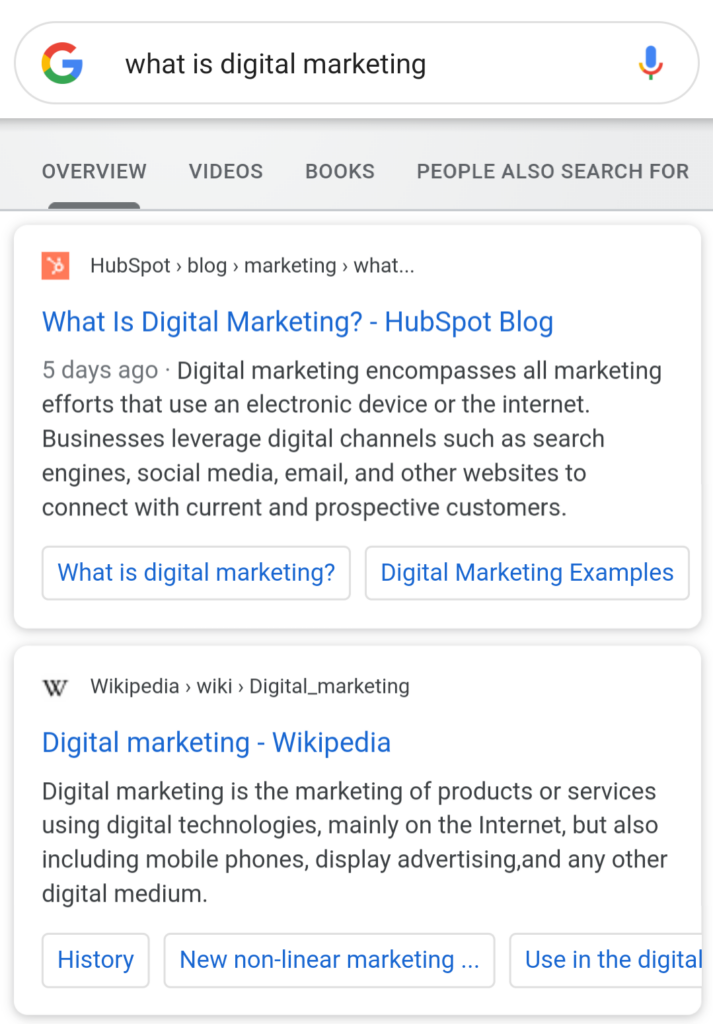
Mastering Meta Descriptions: A Guide to Boosting Your SEO
Staying up-to-date with algorithm changes and industry trends is crucial for mastering meta descriptions in today's digital age.
Search engine algorithms are constantly evolving, so it's essential to stay informed about the latest updates and changes.
This knowledge helps you stand out from competitors by adjusting your meta description strategy accordingly.
Stay Informed with Leading SEO Blogs
- Follow leading SEO blogs like Moz.com, NeilPatel.com, and Search Engine Journal to stay updated on algorithm changes and industry trends
- Participate in webinars and attend workshops held on these sites to gain access to practical tools that boost your success rate when crafting effective meta descriptions
Crafting Effective Meta Descriptions
Crafting an effective meta description involves understanding its purpose: attracting clicks by providing a concise summary of what users can expect from clicking through to your page.
To achieve this goal:
- Use active voice verbs while keeping sentences short (around 20-30 words)
- Avoid using jargon or technical terms unless necessary for clarity purposes
- Include relevant keywords within the character limit (between 155-160 characters) without stuffing them unnaturally throughout the text
Remember, search engines may penalize you for keyword spamming instead of rewarding quality content creation efforts.
Conclusion
Mastering meta descriptions takes time, but it pays off well if done correctly as they play a vital role in driving traffic towards websites organically via SERPs (Search Engine Result Pages).
By following best practices such as those mentioned above and regularly updating yourself regarding new techniques and strategies, you can ensure long-term success!
Using Social Media Insights To Inform Your Approach To Meta Descriptions Across Channels
Crafting Effective Meta Descriptions: Insights from Social Media
Crafting effective meta descriptions requires understanding your audience.
Social media platforms offer a goldmine of insights into their preferences and interests.
To tap into this resource, analyze user comments on posts and ads across different channels.
Look for common themes that reveal pain points or areas where competitors fall short - great fodder for compelling meta descriptions!
Mining data such as popular hashtags and keywords used by followers will guide you in framing the message effectively.
Social media analytics tools are essential for gaining valuable insight about audiences.
Here are five key takeaways:
- Use social media analytics tools to gain valuable insight about audiences
- Analyze user comments to identify pain points or competitor weaknesses
- Utilize these insights when crafting compelling meta descriptions
- Consider using popular hashtags and keywords in your description messaging
- Continuously monitor feedback from users to refine future strategies
By using these insights, you can create meta descriptions that resonate with your audience and drive traffic to your website.
Best Practices For Measuring Success And Optimizing Over Time
Optimizing Meta Descriptions: How to Measure Success and Increase Conversions
As an industry expert with 20 years of experience, I know that measuring success is crucial for optimizing meta descriptions over time.
It's not just about generating traffic but also ensuring that the generated traffic converts into customers.
Track Your Click-Through Rate (CTR)
To measure success and optimize over time, it's important to regularly track your click-through rate (CTR).
This metric shows how many people are clicking on your links after reading your description in search engine results pages (SERPs).
A higher CTR means more visits to your site which could lead to increased sales or conversions.
Avoid High Bounce Rates
Another key metric is bounce rates - high bounce rates mean visitors aren't finding what they need once they land on your website through meta description clicks.
To avoid this issue:
- Use clear language
- Keep it concise
- Include relevant keywords
- Highlight unique selling points
- Match content with user intent
By following these tips, you can create effective meta descriptions that drive quality traffic and increase conversion rates.
A well-crafted meta description can make all the difference!
Final Takeaways
As a founder of an AI writing tool, I've seen my fair share of poorly written meta descriptions. You know the ones - they're either too long, too short, or just plain boring. But fear not, my friends, because I'm here to share my tips on how to write killer meta descriptions that will make your website stand out from the crowd. First things first, let's talk about what a meta description is. It's the short blurb that appears under the title of your website on search engine results pages. It's your chance to entice potential visitors to click through to your site, so it's important to make it count. One of the biggest mistakes people make when writing meta descriptions is not including their target keywords. These are the words or phrases that people are searching for when they come across your website. By including them in your meta description, you're telling search engines that your site is relevant to those keywords. Another important factor to consider is the length of your meta description. Google typically displays up to 155 characters, so it's important to keep it concise and to the point. Use action-oriented language and highlight the benefits of your website to entice visitors to click through. Now, you may be thinking, "But Asim, I'm not a writer. How am I supposed to come up with a compelling meta description?" That's where AtOnce comes in. Our AI writing tool can generate meta descriptions for you based on your target keywords and the content of your website. It's quick, easy, and ensures that your meta descriptions are optimized for search engines. So there you have it, folks. Writing killer meta descriptions doesn't have to be a daunting task. By following these tips and using AtOnce, you can create meta descriptions that will drive traffic to your website and help you achieve your business goals.AtOnce uses artificial intelligence to help you write better, faster, and easier than ever before.
- Create blog posts, ads, product descriptions, and more with just a few clicks
- Save time by automating tedious writing tasks
- Improve your writing with advanced grammar and spelling checks
Get results you can trust
AtOnce's AI technology is constantly learning and improving, ensuring that your writing is top-notch every time.
Join thousands of satisfied customers and start using AtOnce today. Say goodbye to writer's block and hello to effortless, effective writing.What is meta description?
Meta description is a brief summary of the content of a webpage that appears in search engine results pages (SERPs). It is an HTML tag that provides a concise explanation of the content of a webpage.
Why is meta description important?
Meta description is important because it can influence the click-through rate (CTR) of a webpage in search engine results pages. A well-written meta description can entice users to click on a webpage and visit it.
What are the best practices for writing meta descriptions in 2023?
The best practices for writing meta descriptions in 2023 include keeping them between 50-60 characters, including the primary keyword, making them unique for each page, and using persuasive language to entice users to click on the webpage. It is also important to avoid using duplicate meta descriptions and to update them regularly to reflect any changes in the content of the webpage.
